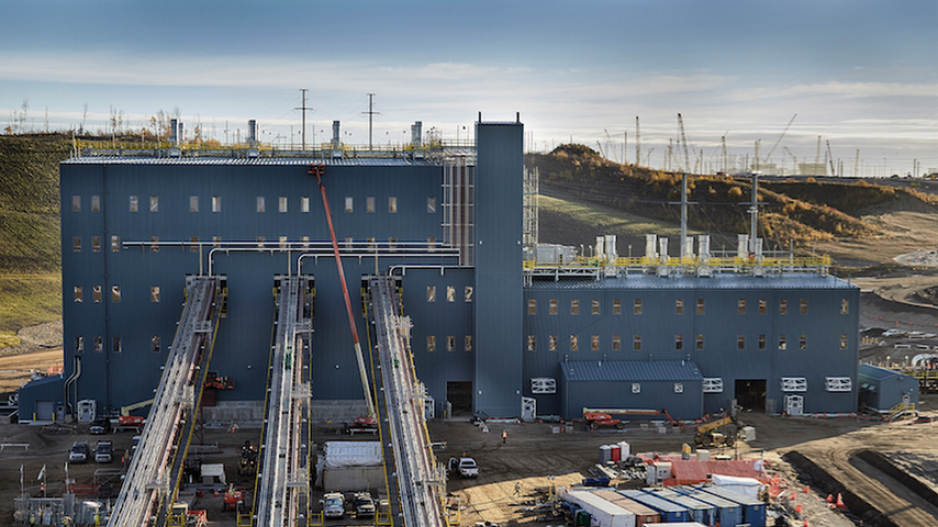Teck Resources (TSX.B, NYSE:TECK) is defying conventional wisdom and plowing ahead with what appears to be a multi-billion dollar vote of confidence in Alberta’s oilsands and a long-term global demand for oil.
Earlier this week, a joint environmental review began in Alberta for Teck’s massive Frontier oilsands project 100 kilometres north of Fort McMurray.
The proposed project would be a truck-and-shovel oilsands mining operation that, at full build-out, would produce up to 260,000 barrels of oil per day and have an estimated capital cost of $20 billion.
Teck’s move into a joint environmental review process came less than two weeks after an official ribbon cutting at the new $17 billion Fort Hills oilsands project, which began producing first oil in January.
The Fort Hills project marked the first foray into oil for Teck, which is B.C.’s largest and most diversified mining company.
It holds a 21% share in the Fort Hills oilsands project, with Suncor Energy Inc. (TSX:SU) owning 54% and France’s Total SA owning 25%. Teck reported revenue of $78 million from blended bitumen in the first half of 2018.
Teck is currently the sole owner of the Frontier project, although the company says it may seek a partner, should the project get regulatory approval the company sanction the project.
“We have experience in partnerships to successfully develop oilsands projects through our involvement in Fort Hills, and this is clearly a strong option for advancing such projects,” said Teck spokesman Chris Stannell.
Teck claims the Frontier project would have a lower greenhouse gas intensity than about half of the oil currently refined in the U.S. That is partly owing to the paraffinic froth treatment it will use, which eliminates the need for an upgrader.
Over the course of a five-week joint review with the Canadian Environmental Assessment Agency (CEAA) and Alberta Energy Regulator, project opponents are likely to question the economics of the project. After all, some energy analysts have declared Alberta’s oilsands to be in sunset mode.
Energy majors like Royal Dutch Shell have divested from Alberta’s oilsands,
Western Canadian Select has fallen recently to US$31 per barrel, compared with US$73 for West Texas Intermediate, and producers in Alberta face serious rail and pipeline constraints.
“When you look at the short-term price of oil, it’s certainly not going to be in a place that would support the sanctioning of a new mine,” said Kevin Birn, director for the North American Crude Oil Markets for IHS Markit.
“But that’s not the price of oil that’s going to be used to base the decision over this asset. It’s going to be Teck’s view over the long-term price of the oil.”
Birn doesn’t think the Frontier project could be in production until the mid-2020s, if it’s approved.
By then, should new pipelines get built to provide more capacity to export Alberta oil to the U.S. and Asia, Alberta producers expect the price for Alberta heavy oil to improve.
Jihad Traya, an oil and gas analyst for Solomon Associates, said it makes sense for Teck to get the Frontier project into the regulatory queue now. Once the Trudeau government’s new Impact Assessment Act replaces the current CEAA, getting projects through the new federal review process could be even more difficult than it is now.
And at the provincial level, as part of its climate action strategy, the Alberta government has capped emissions from the oilsands at 100 million tonnes. Oilsands emissions already stand at about 70 million tonnes, and the Canadian Energy Research Institute estimates new oilsands projects could reach the 100 million tonne cap by 2030.
“Once they’re in the hopper… they are now one of those projects that can fall under that CO2 cap,” Traya said.
Birn said Teck is unique in Alberta’s oilsands space in that it is, first and foremost, a mining company, not an oil company. Teck’s primary business is copper, metallurgical coal and zinc.
“Mining companies are businesses about operational efficiency,” he said. “Bringing that skill set to bear on the oilsands, when you have an asset that is functionally just like a mine, which they have tremendous experience in, could mean they have a different view to the oilsands asset.”
Teck has signed 14 participation agreements with First Nations in the region, including the Mikisew Cree First Nation, which had initially opposed the project.




